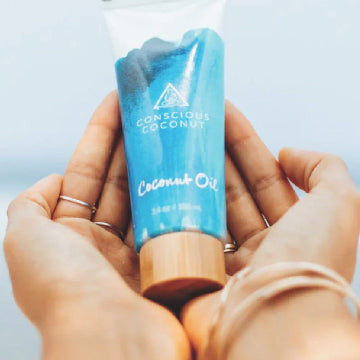Everything You Need to Know About Oil Cleansing
You’ve probably heard of the term “oil cleansing” being thrown around in the beauty industry in recent years. More than just a longstanding trend, oil cleansing is a gentle alternative for removing your makeup and keeping your skin looking clean and fresh.
Despite its popularity, however, many are still put off by it. We’ve always had this connotation that oil and skin don’t mix. True, certain oils are highly comedogenic and can disturb your skin’s equilibrium, but there are lots of oils that can helpminimize the overproduction of oil that your skin naturally produces. These oils can even help restore balance to your skin by keeping it hydrated and healthy.
If there’s anything you need to remember about oil cleansing, it’s that the most important thing is to find the right blend that works for you and your skin.
Read on to learn everything you need to know about the oil cleansing method.

What Are The Benefits of Oil Cleansing?
Cleansing oils bond oil on your skin with the oil in the product. Compare this to your typical foaming and gel cleansers on the market, which employ surfactants to remove dirt and debris from your skin. This makes oil cleansers more hydrating and nourishing than other alternatives.
The traditional method of using foam cleansers can strip your skin of its natural moisture, leaving it dry and dull. Adding an oil cleansing method into your skin care routine can help maintain your natural lipid layer and protect the good bacteria that live on your epidermis.
Oil cleansing can work for all types of skin. It is, however, extremely beneficial for those with dry skin who experience irritation and dehydration from surfactant cleansers.
As for those with oily skin, oil cleansing is an excellent way to eliminate sebum, a.k.a. the oil in your skin that causes acne. On the downside, using oils might clog pores or remove too much oil from your skin, resulting in pimples or excessive dryness.
Before committing to the oil cleansing lifestyle, pay attention to how your skin reacts. Do a patch test, if necessary.
How Do I Know The Oil That’s Right For Me?
Oil cleansers are everywhere nowadays—you can buy a premixed version formulated for your skin type, or you can also try making one of your own.
Avoid food-grade oils as much as possible. Use cold-pressed, unrefined, virgin oils that are designed to be used on skin. The oils most commonly used for oil cleansing are castor oil and olive oil. Make sure to buy only the high-quality ones that do not have any added scents or dyes.
Most recipes call for a one-to-one ratio of these two oils at first, then gradually increase the amount of olive oil for dry skin or castor oil for oily or acne-prone skin.
- For use on dry skin. Use hydrating olive oil, which is high in vitamins and antioxidants and can help your skin stay moisturized. You may also add extra moisture by using coconut or avocado oil.
- For those with delicate skin. Castor oil should be avoided. This oil has antibacterial effects, but it also serves as an astringent cleanser and can dry up the skin. Instead, use jojoba or rosehip oil.
- For acne-prone or oily skin. Jojoba oil can help reduce acne and balance oil production, making it the best oil for oily or acne-prone skin. Argan oil also aids in the control of sebum production. Another oil you can try is non-greasy marula oil.
How Do I Oil Cleanse Properly?
Ready to add an oil cleanser to your skincare routine? Follow the steps below:
- Pump out your product into dry, clean hands. Your face has to be completely dry before you apply an oil cleanser. Any sign of water will hinder the cleansing oil from working properly. Allow the oil to blend with the natural oils, first, and makeup on your face.
- Massage the product onto your face. Give yourself a little massage by applying the oil to your skin in smooth, circular motions with your fingertips. By doing this, you’ll create friction that heats both your skin and the product. This will begin to open up your pores, allowing the oil to seep deeply into your skin. Try to use a deep cleansing oil for daily use and for all skin types as a day and night cleanser.
- Rinse with warm water. Water temperature might seem like such a trivial thing, but it is crucial. Remove your oil cleanser with warm water only. Cold water will cause the oil to harden into its solid-state, while hot water will strip away your skin barrier.
A better way to do this is to cover your face in a warm, damp washcloth to further heat the oil and open your pores. Use this to gently remove the product and other icky debris from your skin.
Make sure that every bit of your cleansing oil is stripped off before moving on to the next steps.
- Finish the rest of your routine. Once your skin is clean, complete your usual skincare routine with serums and moisturizers. Try to add in products with ingredients like ceramides. This will lock in all of the good nutrients that cleansing oil introduced to your skin.
You can also try double cleansing, otherwise known as the K-beauty double cleanse, wherein you use an oil-based cleanser first followed by a water-based cleanser. This removes any lingering residue and is great for acne-prone or oily skin.
Oil Cleanse For Cleaner & More Moisturized Skin
Want to switch up how you wash your face? Then now’s the perfect time to give oil cleansing a shot! Just keep in mind that not all skin types are created equal. This method may or may not work for you, so pay close attention to how your skin reacts.
If you see an uptick in breakouts, especially after using the oil cleansing method for a few weeks, you may need to try using a different oil or stop oil cleansing entirely.
For your own oil cleansing experience, check out these Oil Cleanser suggestions below:

LUXE Botanics Hydrating Pre Cleanser

-
Posted in
hydrate skin, Luxe Botanics, oil cleanser, oil cleansing, Raaka's World














